View basket (0 items $0.00)
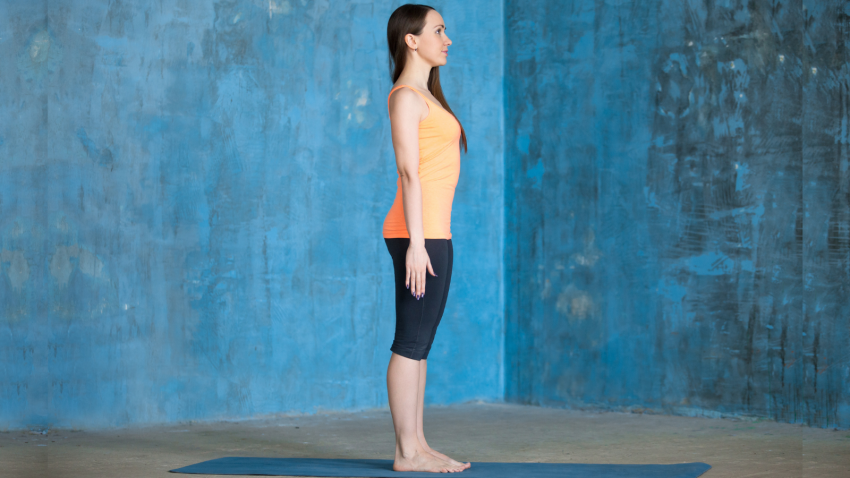
4 Yoga Poses for Better Posture
As we get older, poor postural habits can have a domino effect on our entire bodies, stressing joints as well as internal organs of the heart, lungs, and digestive tract. Quite often, pain or injury stems from postural imbalances. That is why improving your posture, strength and mobility can help you move more freely with less pain and stiffness. Fortunately, it is never too late to improve your posture.
Posture-Pain Connection
Poor posture and pain often go together. As we get older, bad habits, such as slouching and inactivity, cause muscle fatigue and tension. When the muscles normally responsible for holding us upright become weak or underused, other muscles compensate by working harder. Over time, the tension in these chronically tight muscles leads to things such as back pain, spinal dysfunction, joint degeneration, rounded shoulders, and even a potbelly.
In the same way, pain creates tension in our bodies, especially when trying to protect vulnerable joints, such as an arthritic knee or hip. To protect a painful joint, we often adjust the way we walk, run, or even rest. Instead of preventing pain, the tension created by compensatory movement patterns actually contributes to and perpetuates the pain cycle. By improving and becoming aware of our posture, we can break this cycle.
Better Posture: Ending the Posture-Pain Cycle

Even if your posture has been a problem for years, it’s possible to make improvements. Rounded shoulders and a hunched stance may seem like they’re set in stone by the time you reach a certain age, misleading you into assuming you’ve “missed the boat” for better posture. But there’s a good chance you can still stand up taller.
Undoing postural habits takes time and practice. Yoga is one of the perfect ways to do this. Because of its emphasis on body awareness, yoga helps improve both alignment and posture. In particular, standing poses serve to improve spinal alignment, enabling you to more effectively balance and distribute your body’s weight. At the same time, postural awareness keeps the bones and joints in correct alignment so that the muscles are used correctly. In turn, this decreases the abnormal wear and tear on joint surfaces that could cause degenerative arthritis and joint pain.
4 Yoga Poses for Better Posture
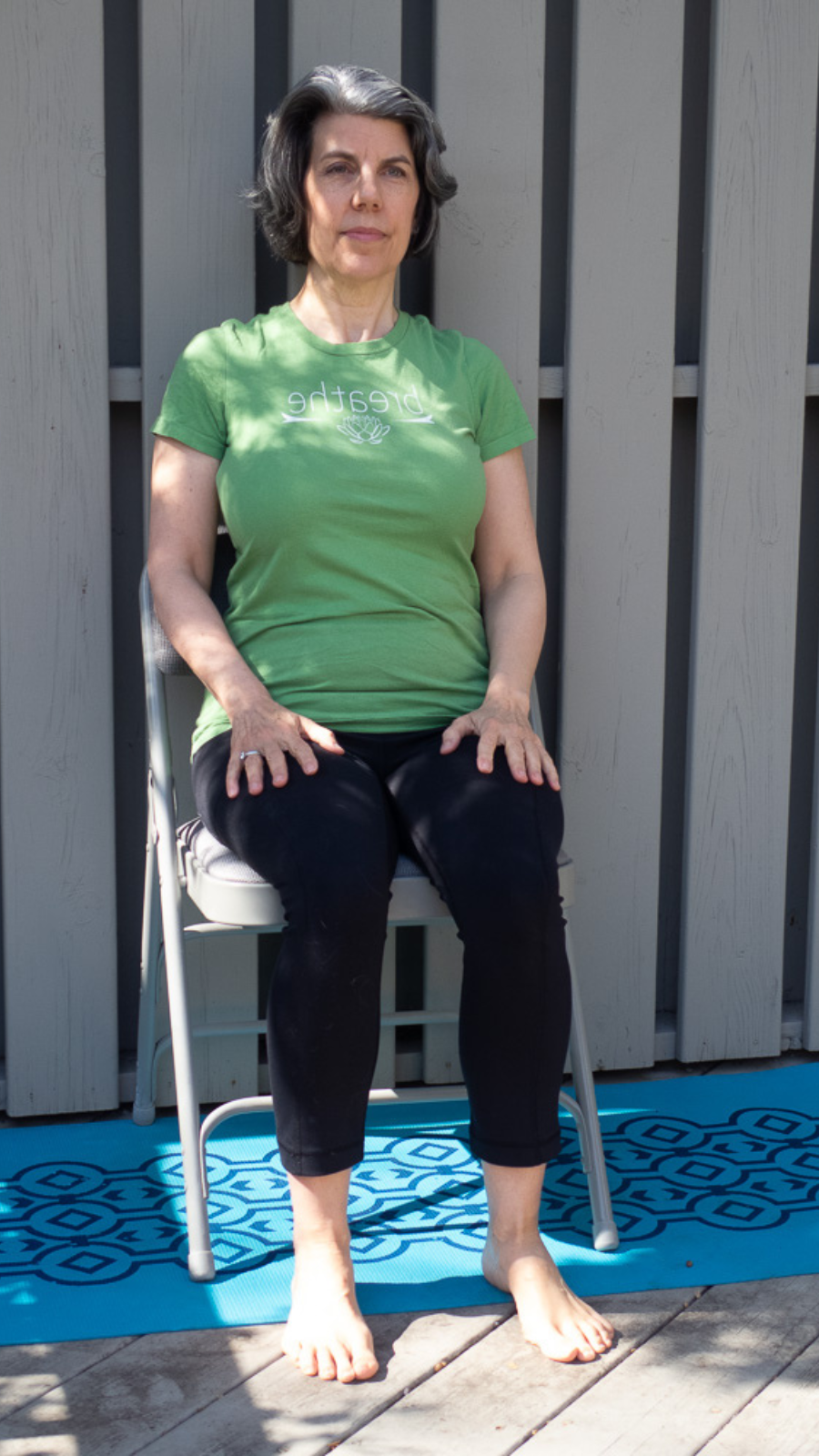
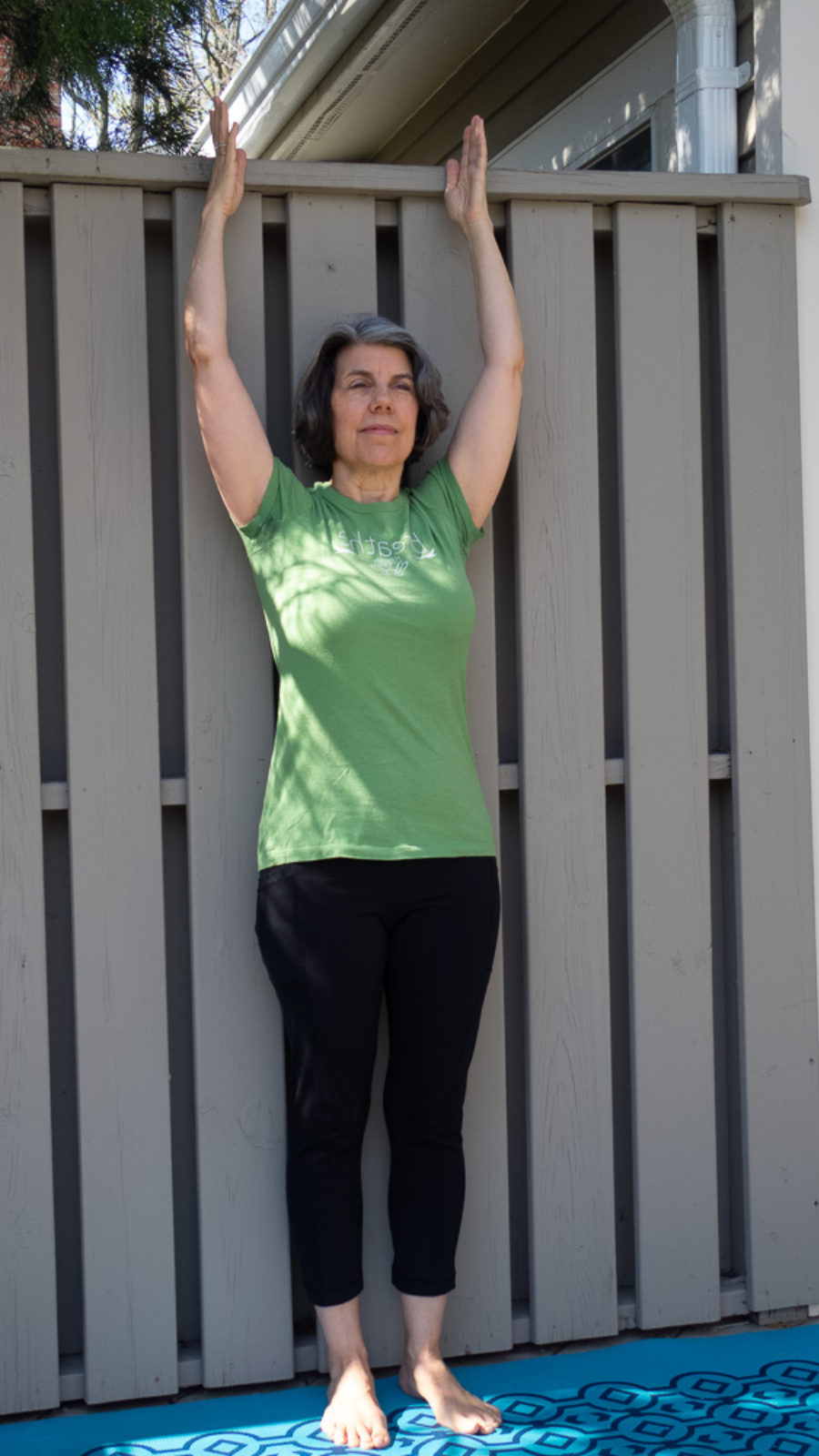 1. Mountain Pose (Tadasana)
1. Mountain Pose (Tadasana)
The foundation of all yoga poses, Mountain Pose helps you establish good alignment.
-
Stand with your back to a wall and your feet hip-width apart. Roll your shoulders up, back, and down, gently pressing your shoulder blades into the wall.
-
On inhalation, lengthen the crown of your head toward the ceiling. Feel your feet rooted into the ground as you take 3 to 5 deep breaths here.
Need more support? Do the pose sitting tall in a chair. Position the chair so you can press your head into the wall.
Take it up a notch: Lift your arms straight up to the sky. Try to bring your thumbs to the wall without arching the back.
 2. Chair Pose (Utkatasana)
2. Chair Pose (Utkatasana)
Chair Pose stretches the shoulders and opens the chest as it strengthens the thighs and ankles.
-
From Tadasana, push your head and back into the wall as you bend your knees and walk your feet away. Aim to bring your thighs parallel to the floor. Stay here for 3 to 5 breaths, continuing to press the head, shoulders, and back into the wall.
-
To come out of the pose, bring your palms to the wall and slide your back up the wall as you walk your feet in. Then, take a moment to shake out your legs before moving to the next pose.
Need more support? Bend the knees only as far as you are able.
Take it up a notch: Instead of using the wall, do Chair Pose in the middle of the room. Lift your arms to shoulder height or overhead.
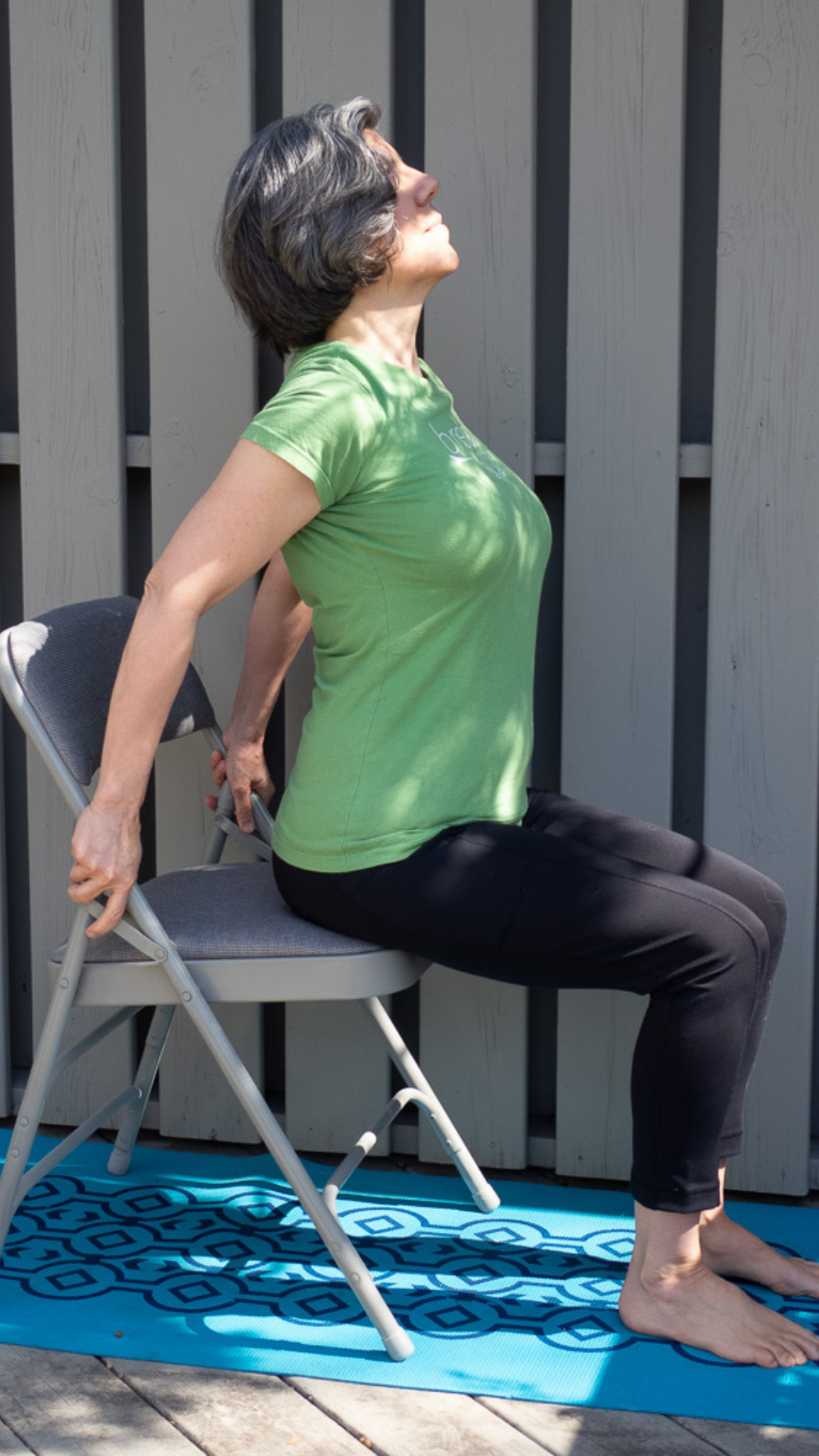
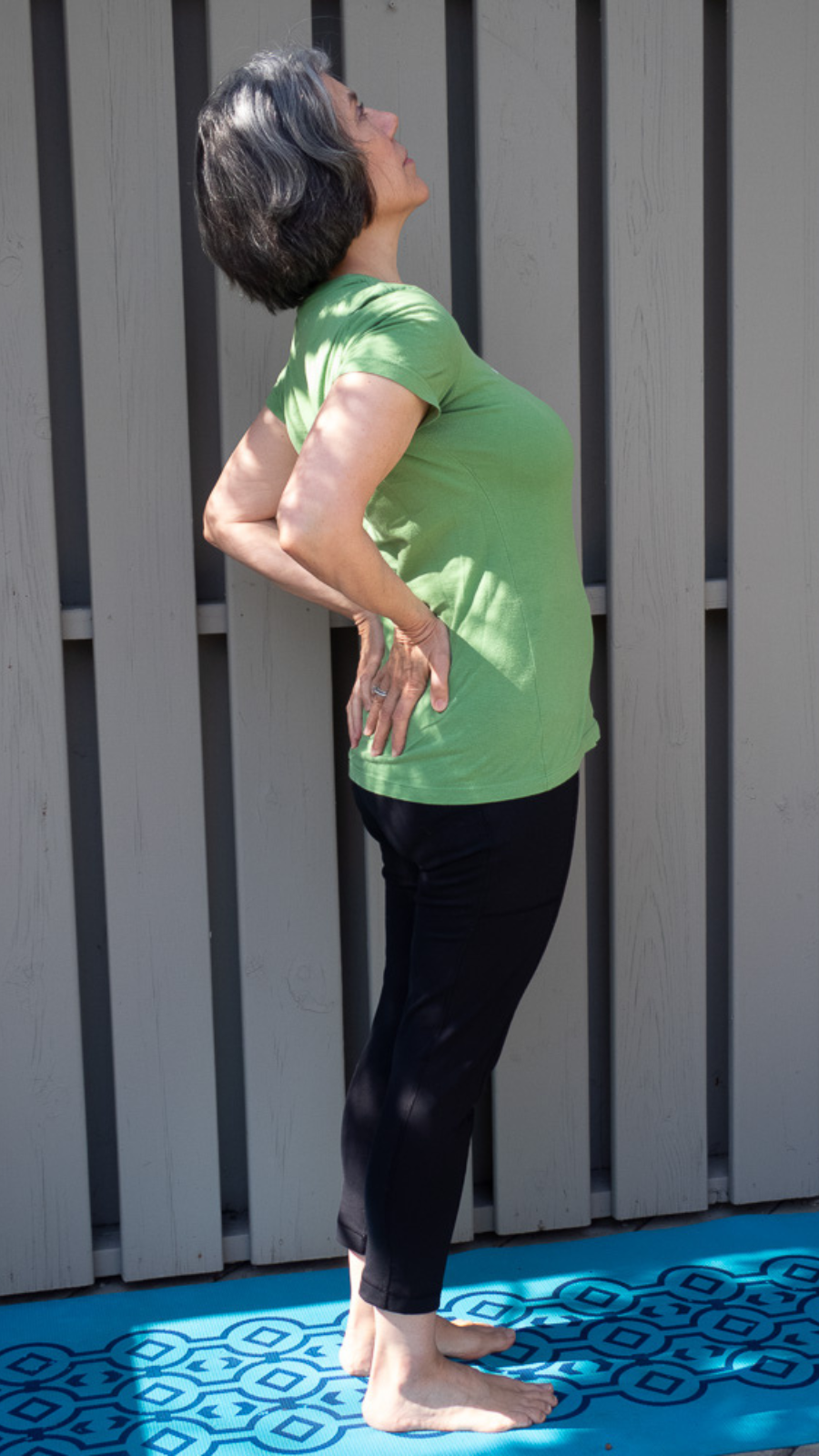 3. Standing Camel (Ustrasana)
3. Standing Camel (Ustrasana)
Camel, a backbending pose, strengthens the upper back and opens the chest for freer breathing.
-
Standing in Tadasana, place your hands on your lower back, about waist height with the fingers spread wide. Squeeze the elbows toward each other, broadening through the collarbones and chest.
-
Next, engage the low belly as you inhale to lift the chest and arch the spine. Be mindful to keep your head in line with the upper back as you lift your gaze slightly.
-
Feel free to move in and out of the pose with your breath 2 to 4 times before staying for 3 to 5 breaths.
Need more support? Do Camel Pose seated in a chair. Sitting tall, reach your arms behind you and grasp the back of a chair for a supported stretch.
Take it up a notch: Continue to lift your chest toward your chin, finding length in the front of your body from belly button to collarbone as you create a more pronounced arch in your spine.

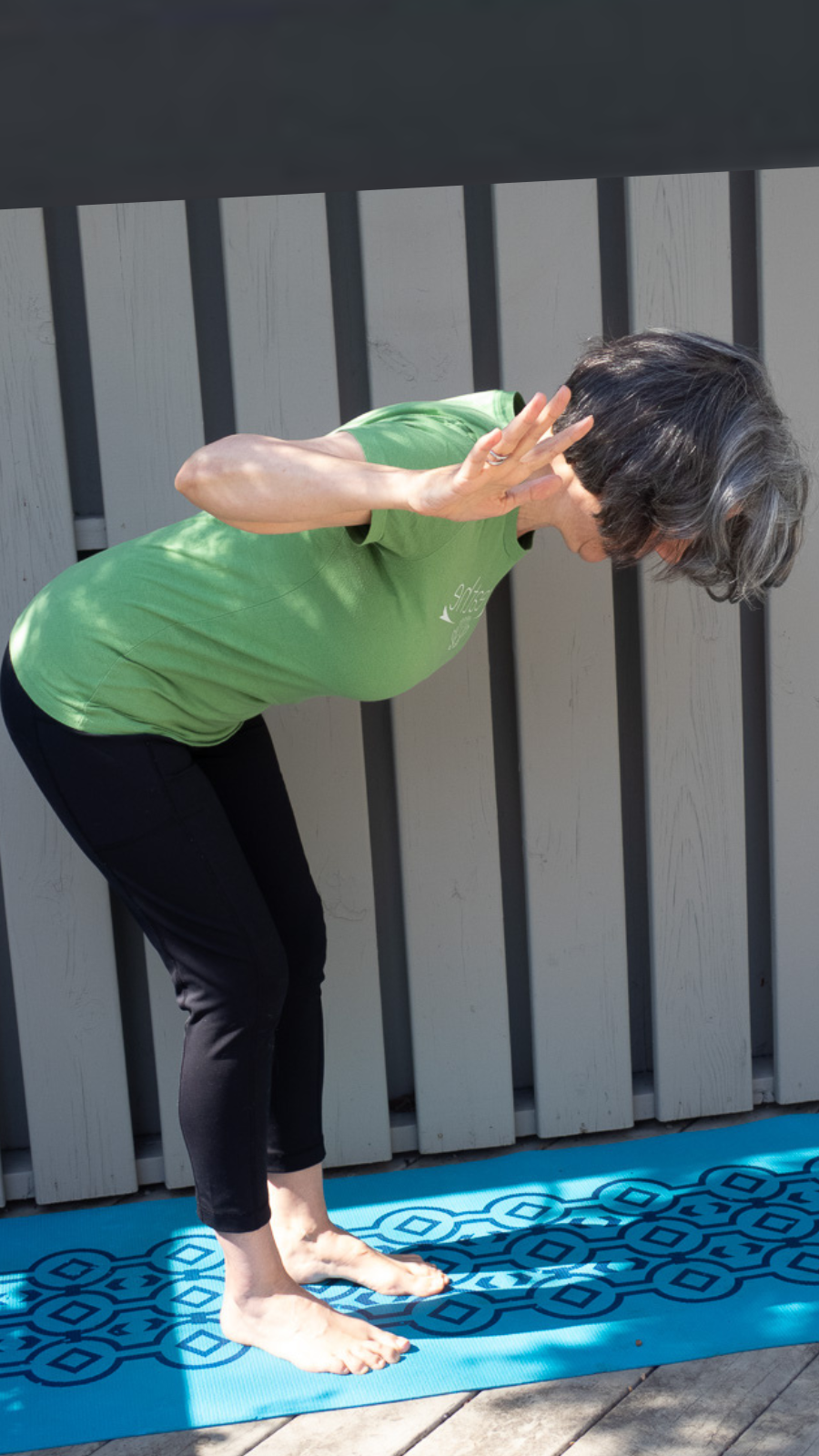 4. Half Forward Fold (Ardha Uttanasana)
4. Half Forward Fold (Ardha Uttanasana)
This pose helps open your chest while strengthening postural muscles in your upper and middle back.
-
From Tadasana, lift your arms to shoulder height, bending the elbows into Cactus Pose.
-
Next, firm your low belly and hinge forward from your hip joints, bending your knees slightly as you bring your torso parallel to the floor.
-
Maintaining a long spine, draw both elbows toward your waist. Imagine squeezing your shoulder blades together as if you were holding a pencil between them. Keep the neck long and your gaze downward and slightly in front of you. Stay here for 3 to 5 deep breaths.
-
To come out of the pose, lengthen your spine as you inhale to Tadasana. Pause in Tadasana for 3 to 5 breaths. Alternatively, lie down on your back in Relaxation Pose (Savasana) for 5 to 10 minutes to relax your back.
Need more support? Try sitting on the front edge of a chair with your knees at a right angle and your feet planted firmly on the ground.
Take it up a notch: Instead of Cactus Pose arms, extend both arms overhead. As you fold forward halfway, keep reaching through the fingertips as you draw the shoulders away from the ears and toward your waist.
A few minutes of practice a couple of times a week will not only increase your postural awareness but also strengthen the muscles of the back and upper body that support good posture. And who knows? After a few weeks, you may notice you have less pain, too!
Reprinted with permission from Wisdom Tree.

 Beverly Davis-Baird, MA, C-IAYT is a New Jersey-based yoga therapist, writer, and educator. She specializes in making yoga accessible for adults 50+, offering classes and workshops for back care, arthritis, bone health, balance, posture, and healthy aging. An educator at heart with over 20 years of experience as a public school teacher, Beverly brings her knowledge of individual learning styles to her classes, providing instruction that is clear, concise, inclusive, and compassionate. Bringing over 30 years of experience and training, she considers herself a lifelong learner and believes that the practice of yoga should bring spaciousness and release from tension, not create it. As such, she strives to make yoga accessible to people of differing abilities, believing the real benefits of yoga come from what is taken with you outside of class and into your life. To read her blog or learn more about her teaching schedule and latest offerings, please visit www.wisdomtreeyoga.com.
Beverly Davis-Baird, MA, C-IAYT is a New Jersey-based yoga therapist, writer, and educator. She specializes in making yoga accessible for adults 50+, offering classes and workshops for back care, arthritis, bone health, balance, posture, and healthy aging. An educator at heart with over 20 years of experience as a public school teacher, Beverly brings her knowledge of individual learning styles to her classes, providing instruction that is clear, concise, inclusive, and compassionate. Bringing over 30 years of experience and training, she considers herself a lifelong learner and believes that the practice of yoga should bring spaciousness and release from tension, not create it. As such, she strives to make yoga accessible to people of differing abilities, believing the real benefits of yoga come from what is taken with you outside of class and into your life. To read her blog or learn more about her teaching schedule and latest offerings, please visit www.wisdomtreeyoga.com.
Featured Courses









